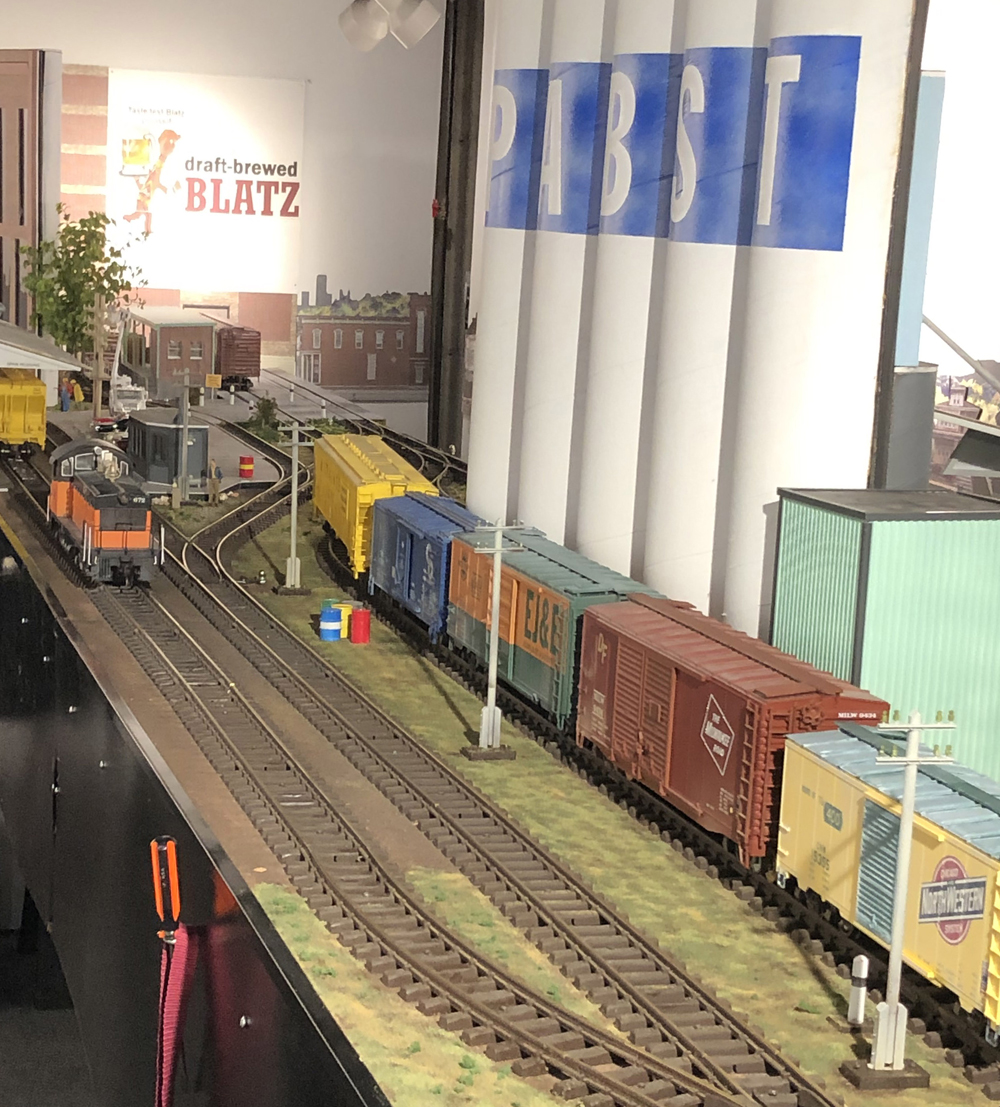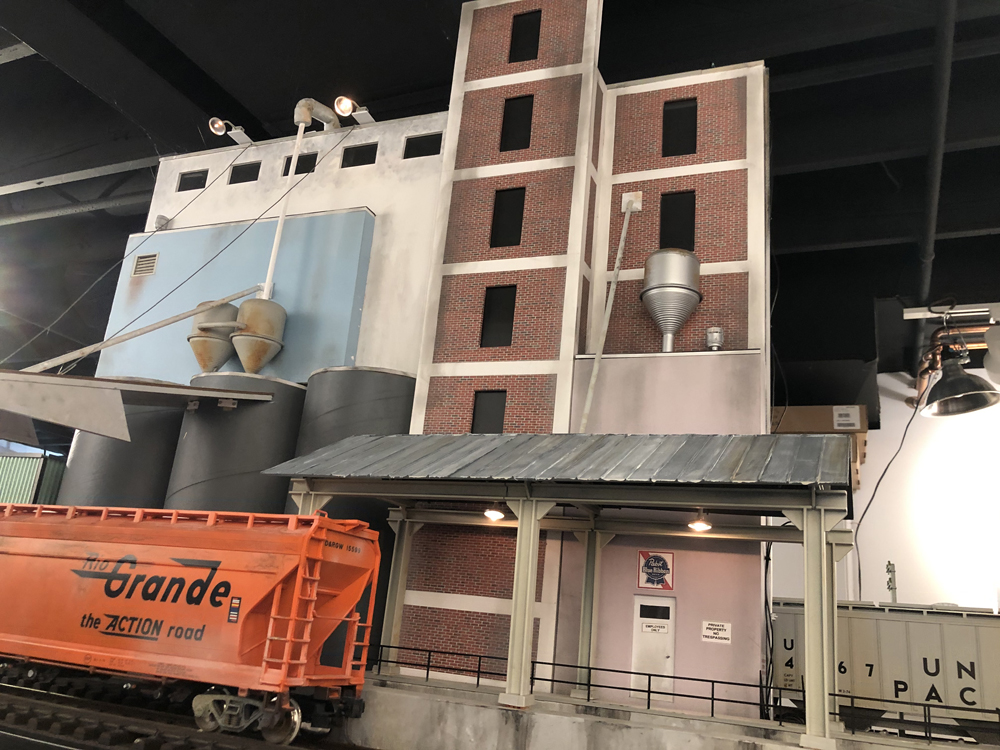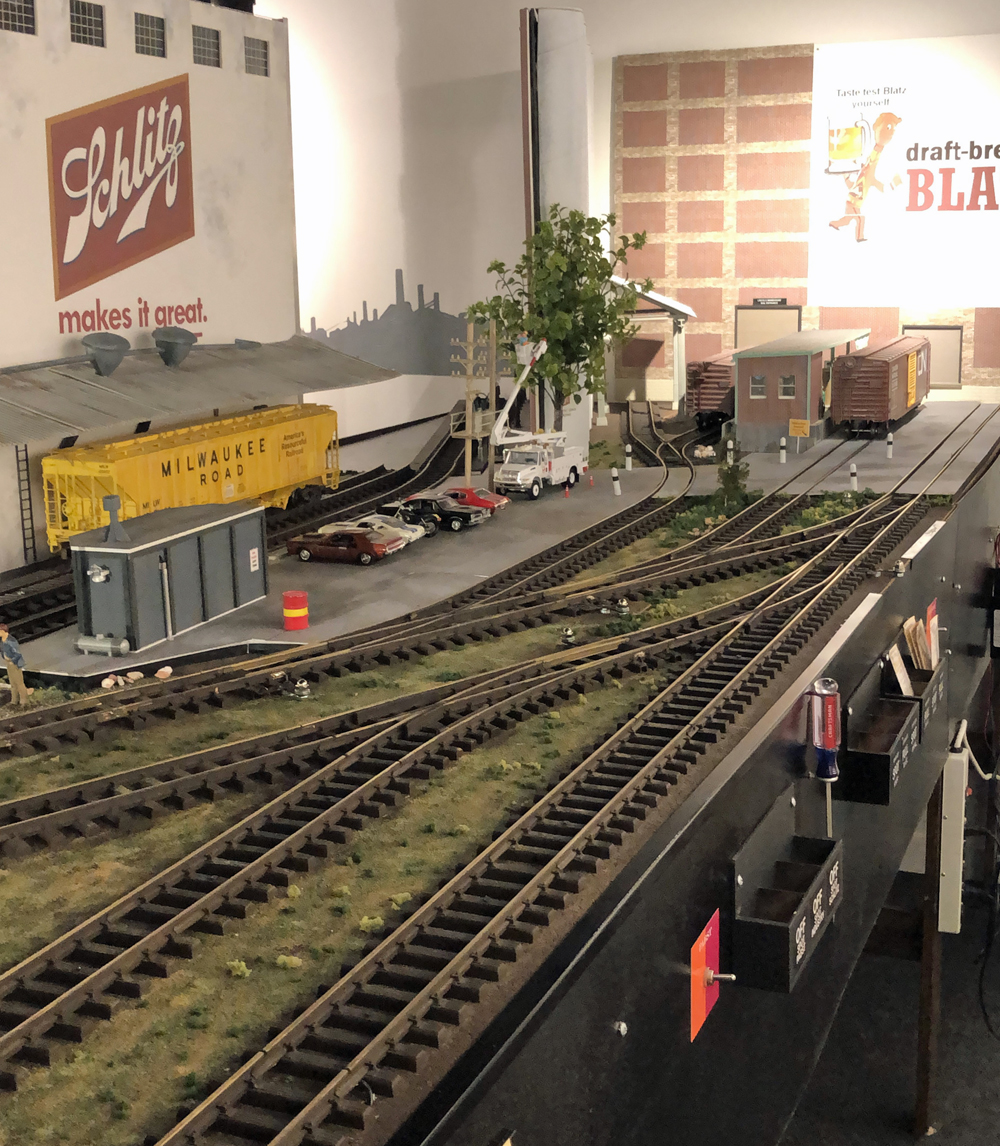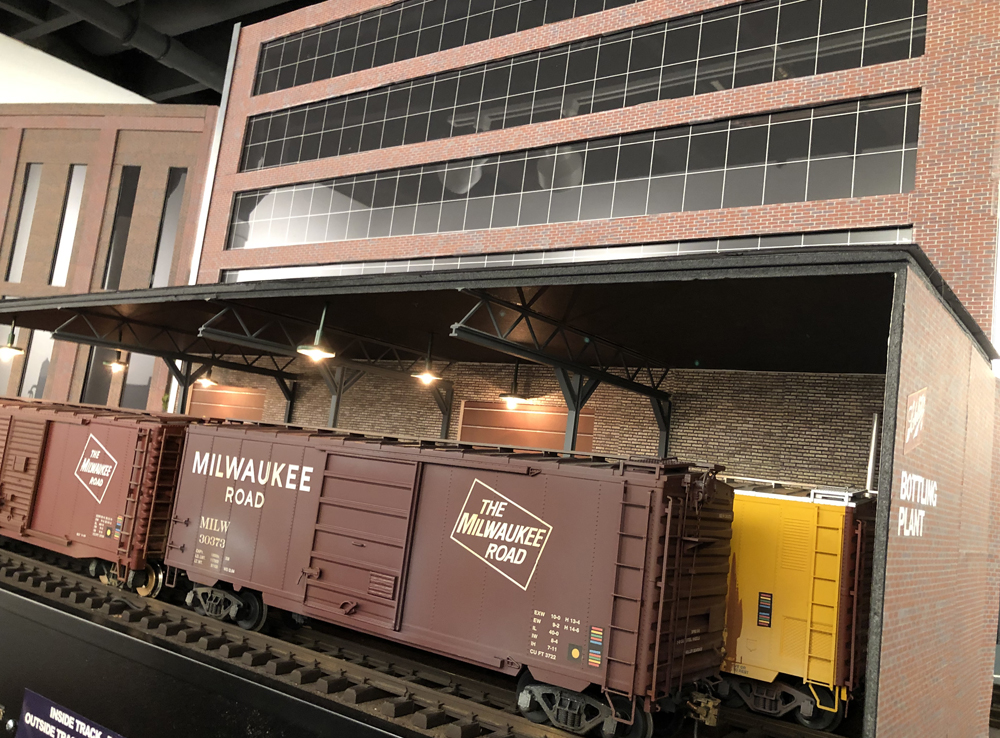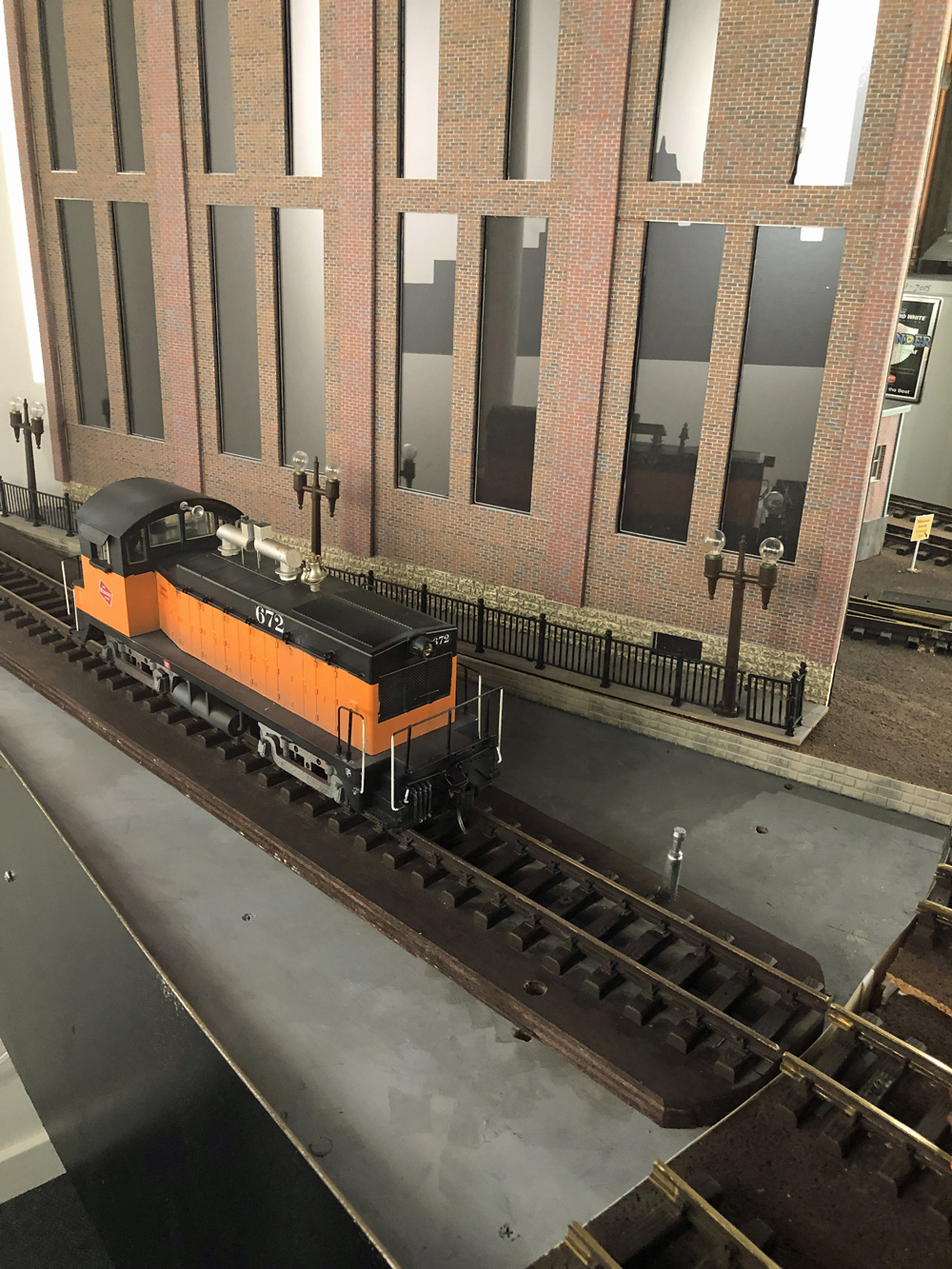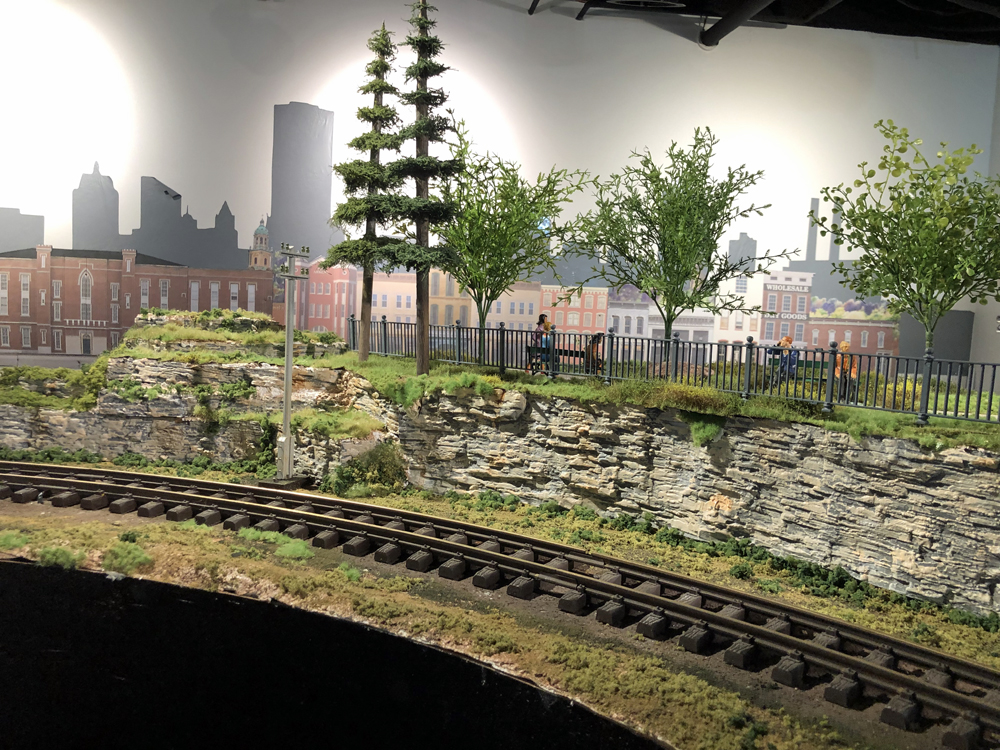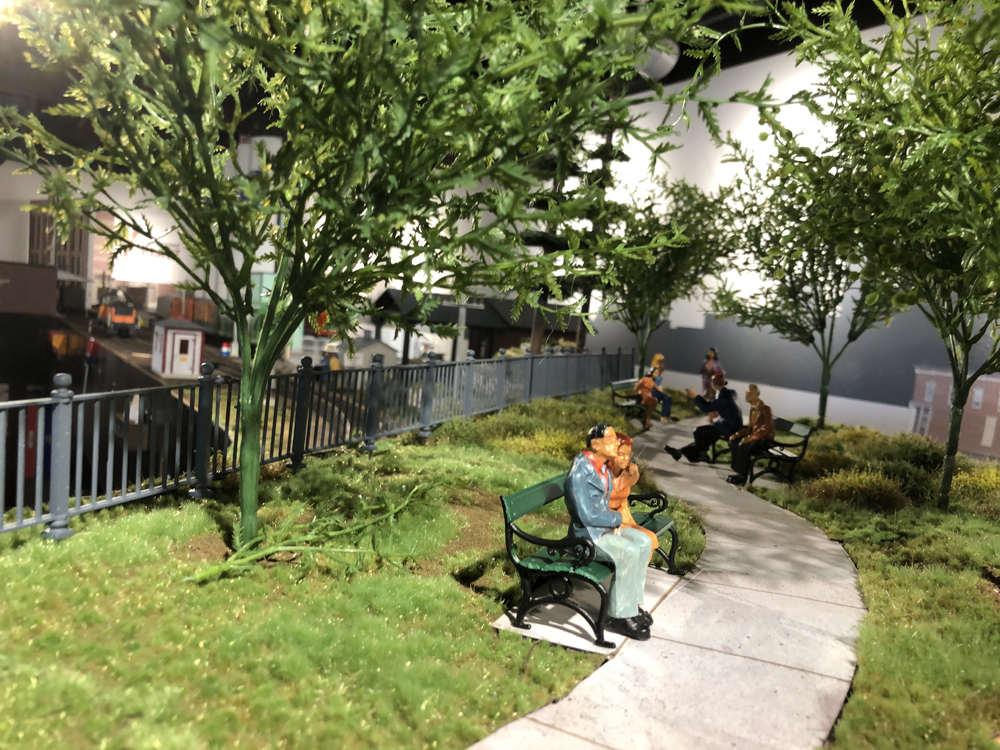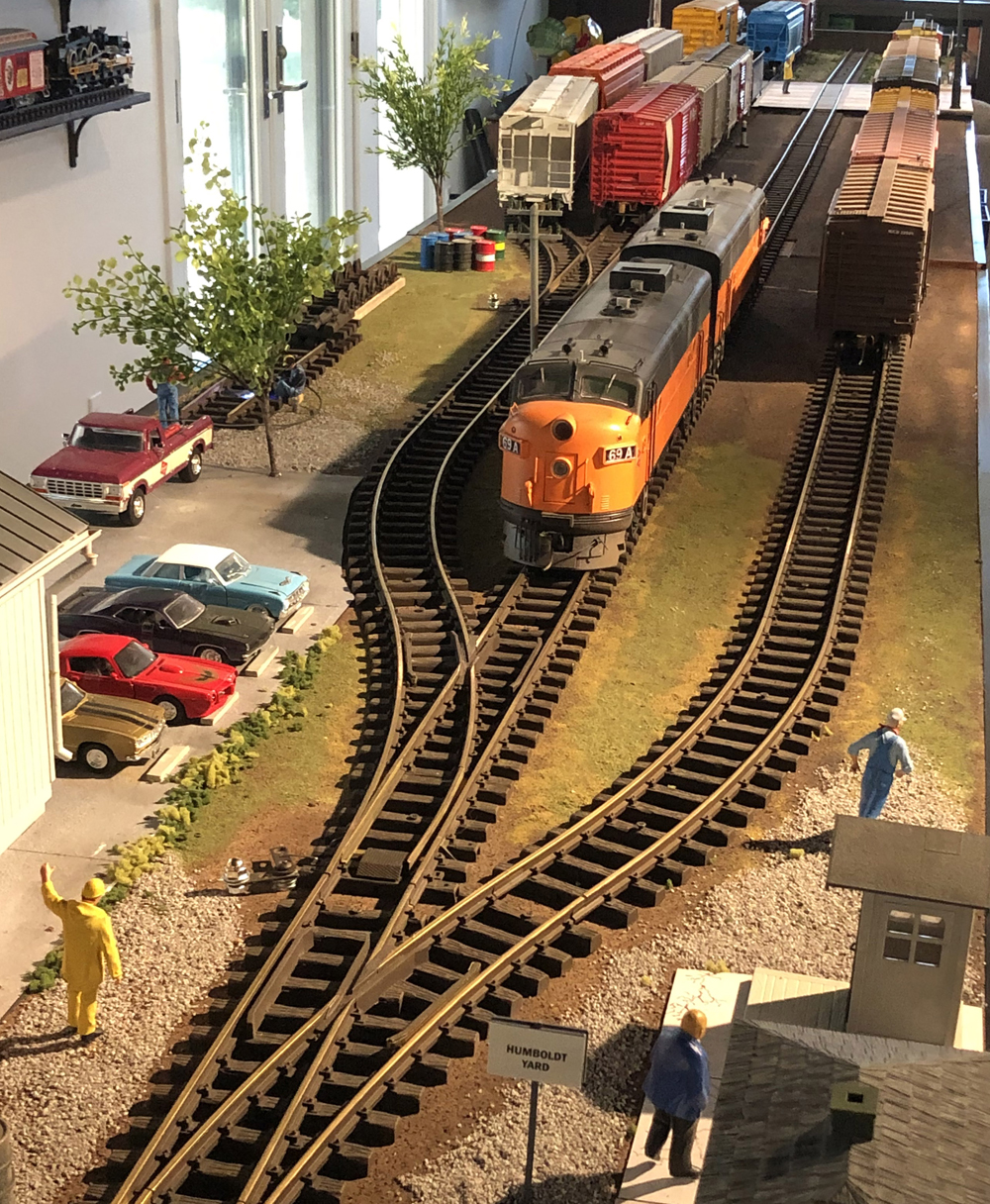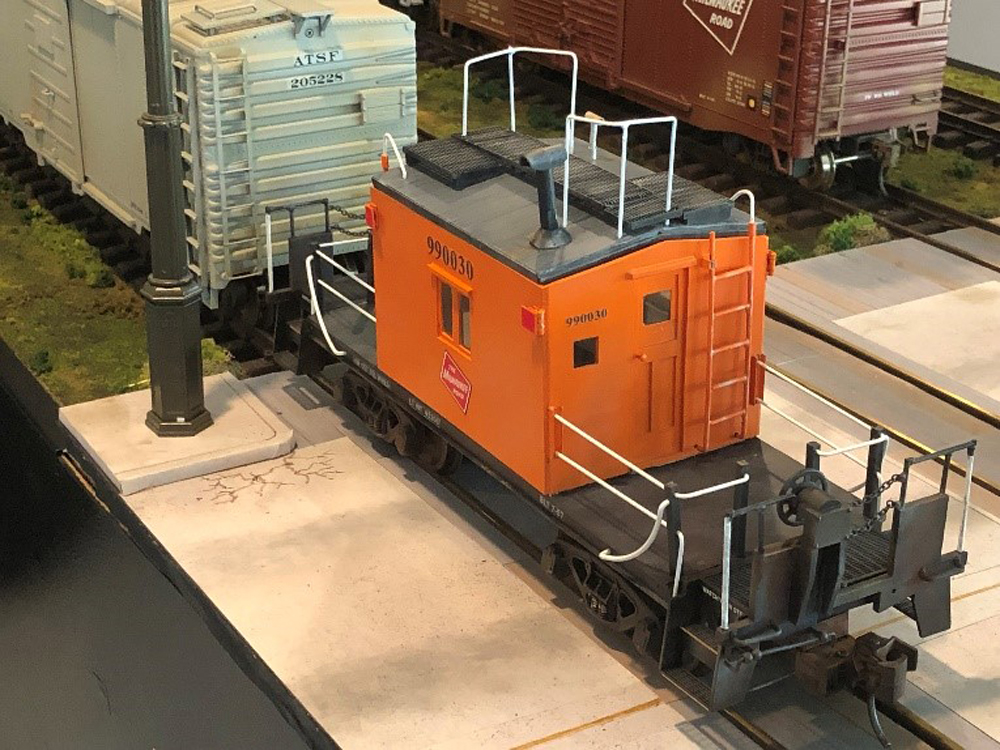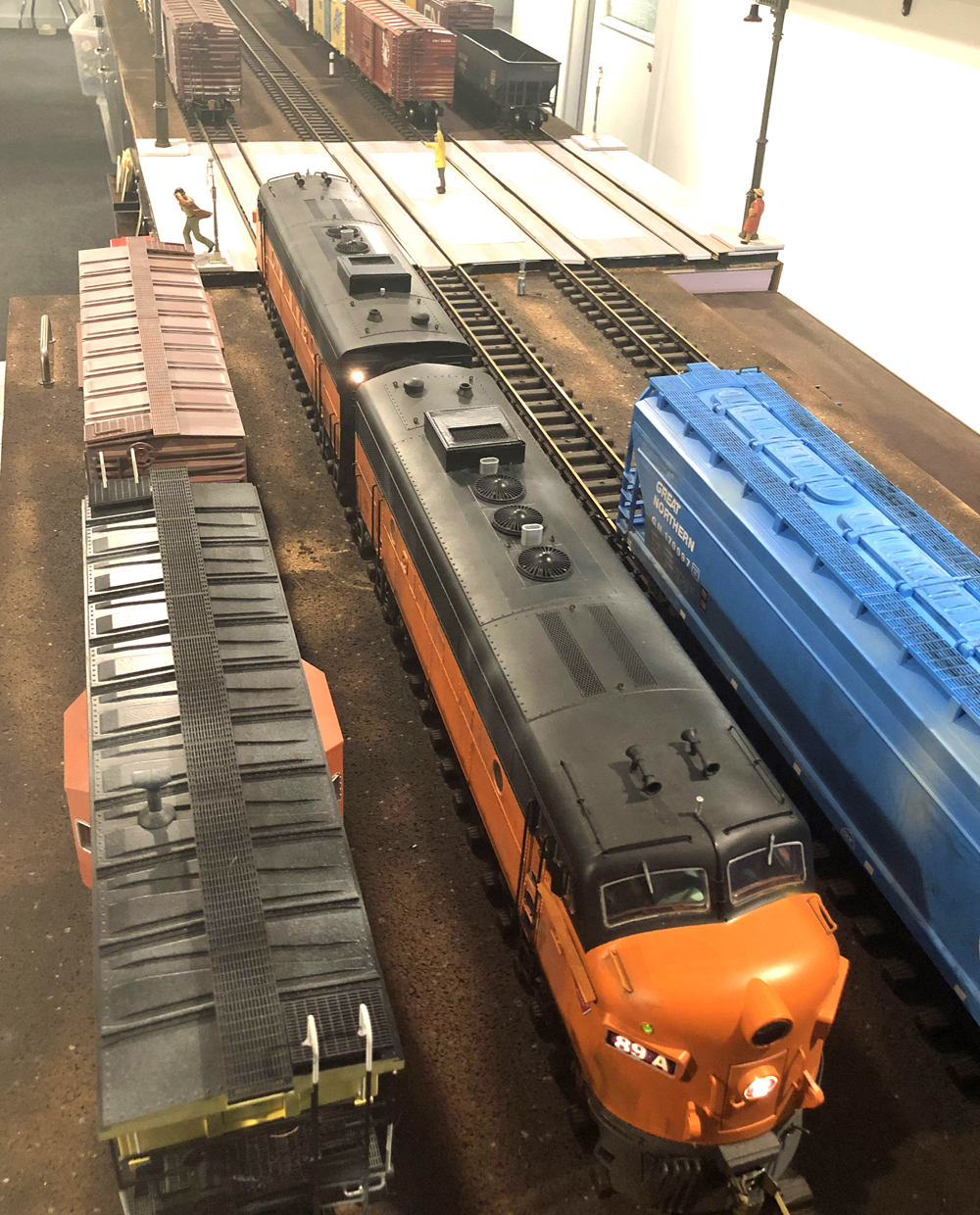About 10 years ago, because of a decision to downsize, I took down my 1,500-square-foot O scale railroad. To make that task more agreeable, I simultaneously started planning my next layout.
I was a lifelong fan of the Milwaukee Road’s Beer Line. That branch was the busiest of all on a railroad that reached from Louisville through Chicago, the Twin Cities, and on to Seattle. The Beer Line name reflected that the branch terminated at the Schlitz brewery and also served nearby Pabst and Blatz, all among the nation’s largest breweries in the 1970s. The last six blocks of downtown Milwaukee’s north side were fascinating to me.
We found a house that fit the bill for the layout. The house required a major renovation, and lucky me, I ended up with two rooms in a lower level that were perfect for an L-shaped island-type railroad. The benefit of the island resulted in aisles that were four to six feet wide. It’s quite accommodating for operating crews.
Design
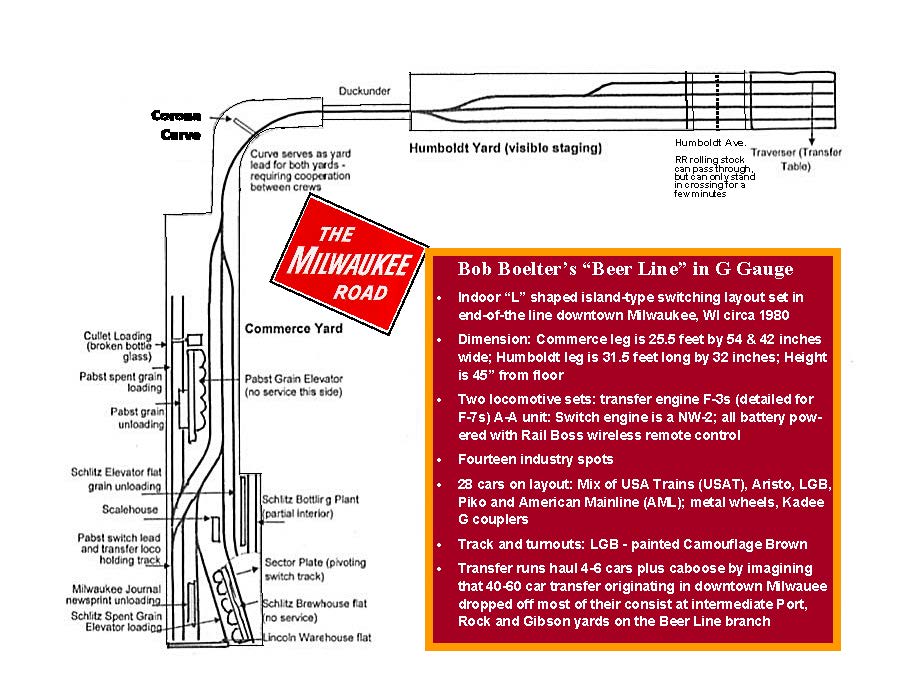 The track plan is a point-to-point, yard-to-yard design between two rooms. There are many compromises large scale modelers have to face. Rather than realistic, it’s impressionistic, conveying the feeling of a gritty urban environment. The only homage to realism is the rolling stock, representative of the line’s traffic around 1980.
The track plan is a point-to-point, yard-to-yard design between two rooms. There are many compromises large scale modelers have to face. Rather than realistic, it’s impressionistic, conveying the feeling of a gritty urban environment. The only homage to realism is the rolling stock, representative of the line’s traffic around 1980.
Since the layout is point-to-point, two features of European and micro-layouts make the railroad work. A sector plate connects a four-foot track that swivels from one end to reach four other tracks. This is at the Commerce Yard end of the layout near the Schlitz bottling plant and grain elevator.
At the layout’s other end, at Humboldt Yard, a four-track transfer table allows a locomotive to escape. When switching cars, the engine has the flexibility to access the remaining tracks for car storage and retrieval.
Construction
The layout is built to be somewhat transportable. The four main sections are lightweight, built on 8-foot-long frames of 1 x 2 lumber. The 1 x 2 supports are on 16” centers. It’s good to have a flat surface for trouble-free switching. On top of the frame is a sandwich of 2” extruded-foam insulation board, ¼” plywood, and ¼” cork.
The sections were designed to sit on durable sawhorses. The two Humboldt Yard sections can be removed from the sawhorses and stacked so they don’t intrude on the family room. The fascia are 16” high tempered hardwood panels.
I avoided adhesives to affix the track; instead, it’s screwed down into the layer of plywood. Because LGB track is costly, in addition to easy removal, I decided not to add ballast. I did, however, paint the track before attaching it to the plywood. I bought a supply of 1/8” masking tape to protect the railheads when I painted the rails and ties with a camouflage brown spray paint. The effect was to have the track, especially the heavy brass rail sides, disappear into a gritty surface environment.
Structures
I previously mentioned that the railroad’s surface was a sandwich of materials. So too are the primary structures. Three were constructed as free-standing flats. The sandwich consists of a base of 30” x 40” foam board, either white, or if there are to be windows, black. On a side with windows, there’s a full-size sheet of Plexiglas for glazing to add stability. The outer surface is a layer of heavy paper printed in a brick, stone, or other suitable wall pattern. Windows are cut out where necessary.
All of the flats become 3-dimensional on the other side. Two of them feature grain silos. Eight-inch diameter cardboard tubes, sold in home centers as a concrete form for setting posts, are a great fit. When cut almost in half and to a 30” height, five tubes set side-by-side fit a 40” width perfectly. The Schlitz grain elevator, which is the flat side, has a two-track, interior cut-out of the bottling facility on its other side. The Pabst silos have grain silos on the back, where there are tracks for grain unloading and spent grain loading.
There are a half dozen free-standing structures. They include a scale house, Milwaukee Journal newsprint loading dock with rail service, and a beer/liquor distributor that has no relation to the breweries and needs no rail service.
Operation
Each operating session commences with a transfer run from Humboldt Yard (visible staging) to Commerce Yard. The transfer engines hold at the Pabst switching lead while the switch engine pulls the caboose, placing it on the Schlitz grain elevator track. Then the waiting outbound cars are assembled onto the caboose and pushed back so the transfer engines can pull out to the head end for the return run to Humboldt. At this point, thanks to an early suggestion by a crew member, it’s tradition on the layout that crews trade trains. With three to four transfers each session, the crew members can experience every job.
Commerce Yard is a busy switching area, with 14 car spots plus room for a few off-spots. Typical protocol is for the switch engine to alternately pull previously spotted cars and exchange them with inbounds ready to be spotted. Usually Schlitz is switched first, non-brewery spots second, then Pabst tracks last.
When a transfer leaves Humboldt, it’s important that tracks 1 and 2 are left clear. When the returning train arrives on track 2, the two-locomotive set cuts off and uses the transfer table to move to track 1, allowing it to run around the train. The engine then pulls and places the caboose on track 1 and begins to build the next outbound by pulling cars from tracks 3 and 4 and adding them to the caboose. When completed, the waiting inbound cars on track 2 are spread around tracks 3 and 4 so that track 2 will be clear when the train again departs.
A non-prototypical reality is the curve connecting the yards acts as the switching lead for both. The situation requires that both train crews cooperate. Generally, things move along quite smoothly. As the Humboldt train is rebuilt and has to pull strings of cars onto the lead, the Commerce engine is often busy working Schlitz, so it usually has no need for the yard lead.
Crews and jobs
For each train, there’s an engineer running the engine and a conductor acting as a switchman and decision-maker, working out of each yard. In addition, each yard has a yardmaster.
Over time, the train crews expressed a preference to work on the layout inside the “L”. Yardmasters work on the outside of the “L.” It’s their job to handle the car card boxes, make suggestions, and throw switches and uncouple cars that are out of the reach of the train crews. Despite having a duckunder at the Humboldt bridge, it can be a long walk for a conductor from one side of the layout to the other.
The Humboldt yardmaster has two additional duties. One is to decide the make-up of each transfer run. The other is to control the signals that give permission to occupy the yard lead.
Locomotives, train control, and rolling stock
There are three locomotives on the layout. Two USA Trains EMD F3 units painted in Milwaukee Road orange and black are coupled to run as a single locomotive. The units are dressed up as F7s, superdetailed and weathered. The switch engine is a USA Trains EMD NW2. It, too, is painted in Milwaukee Road colors and has the unique “garbage can” spark collectors that, on the prototype, were built in the railroad’s Milwaukee shops.
The locomotives are on-board battery powered and controlled by Rail Boss remote radio control. All have Phoenix sound systems.
The rolling stock, consisting of 32 freight cars plus two cabooses, are outfitted to maximize smooth operations. All have metal wheels and Kadee 800-series couplers, and most have additional weight. All cars are weathered. The mix of road names is 40% Milwaukee Road and the rest a mix of primarily Midwest and Canadian roads. Most fall into three categories: boxcars for general freight, refrigerator cars for beer, and covered hoppers for grain. The latter cars are 50 feet or more in prototype length. Even though the models are 22 to 24 inches long, they have no problem navigating the layout’s trackwork.
The railroad has been in operation since 2017 (with a a pandemic break in 2020-21). The Beer Line has proven to keep six or more people engrossed in their work for two to three hours.
Learn more about large-scale operations
General Code of Operating Rules (GCOR)
Operations on the garden railroad
Operator positions on the SJR&P
Like the Beer Line?
Model Railroader built an HO scale project railroad based on the same prototype. Watch the first video: https://www.trains.com/mrr/video-build-the-milwaukee-road-beer-line-part-1-2/





